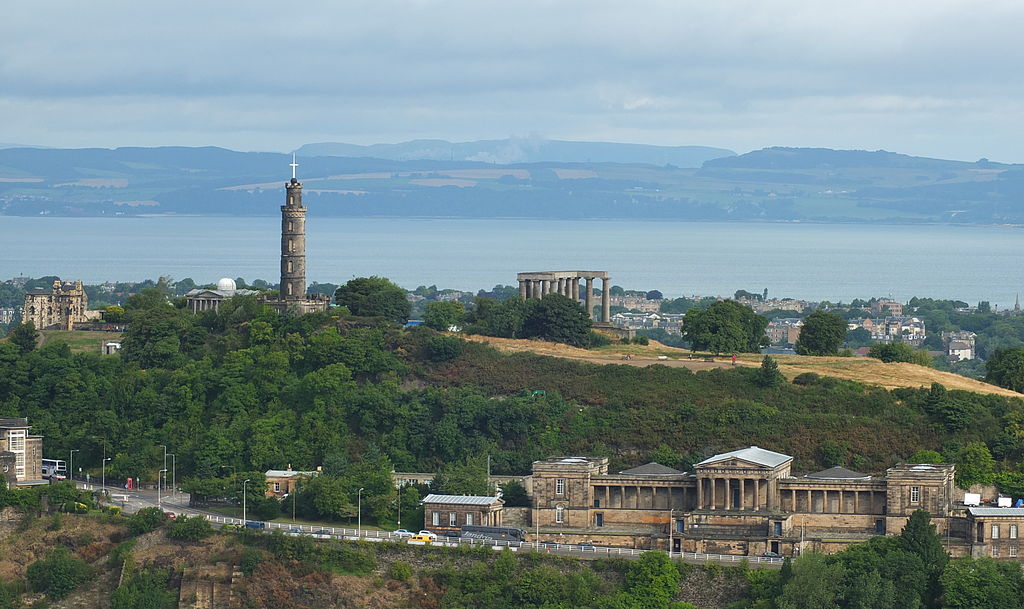
Image by Ad Meskens via Creative Commons
By Alan Gillies
Concerns that Edinburgh may lose its World Heritage Site (WHS) status hit the headlines in October, as a team from the UK committee of the International Council on Monuments and Sites, UNESCO’s official adviser on cultural World Heritage Sites, arrived in the Scottish capital for a visit.
Two controversial planning applications for luxury hotels in the city were the focus of attention – the conversion of the former Royal High School (at one time the planned home of the new Scottish Parliament); and the redevelopment of the 1970s St James shopping centre.
The hotel on the St James site, with its ‘spiralling ribbon’ design, was approved by the council’s planning committee in August against the recommendation of council planning officers. The Old Royal High School application is yet to be decided, but is reported to have attracted over 2000 objections via the council’s e-planning portal. Historic Environment Scotland, statutory consultee for planning applications, has also lodged its official objection to the Royal High School scheme.
Although there is uncertainty over whether Edinburgh’s World Heritage status is genuinely under threat, the controversy has highlighted an important issue for planners and city policy makers everywhere. What is the value of conserving the built heritage of a place?
The benefits of World Heritage Site status
In terms of the World Heritage status itself, there are doubts over its benefits for sites like Edinburgh that are already well-known and established tourist destinations. According to Aylin Orbasli, Oxford Brookes University, “This is partly because the heritage tourism map of the UK is already drawn. Bath, Edinburgh, York and Oxford are all popular tourist attractions regardless of whether they are World Heritage Sites or not (Bath and Edinburgh are, York and Oxford are not).”
UNESCO itself acknowledges that less well-known UK sites “potentially gain more” than those famous prior to UNESCO designation. As an example of the benefits for smaller sites, it highlights the Cornish Mining WHS, whose annual income has increased by 100% since gaining World Heritage status.
Even for more established sites, UNESCO argues that money invested in conservation by authorities in connection with World Heritage status encourages private sector investment. Using the Edinburgh World Heritage Site as an example, it reports that £414,246 in public grants for building conservation leveraged in additional funding from private sources of over £1.9 million in 2011-12. The most recent figures for 2013-14 from Edinburgh World Heritage still show that every £1 of public spending leveraged in about £5 from other sources, albeit on a lower level of spend – just under £180,000 in public grants resulting in a total spend of £971,563 on conservation.
Are there drawbacks to WHS status?
A 2010 Oxford Brooked University study of Bath World Heritage Site commented on the planning and development pressures created by the status, including as an example the city’s controversial redevelopment of another 1970s shopping centre (Southgate).
The study found that the city’s WHS status “places additional responsibilities on the local council that are beyond its normal duties”, incurring costs that have to be met by the council itself. It concluded that “Bath does not gain any discernible additional economic benefit from being a WHS”. However the report does suggest that the status had enabled better preservation, stricter development control, attention to detail and investment in the public realm that may not otherwise have been as rigorous.
Wider benefits of the built heritage
Studies of the value of the built heritage more generally have been more consistently positive.
English Heritage’s most recent estimate is that built heritage tourism contributed £5.1bn in the UK in 2011, and that, after including indirect and induced effects, the total economic impacts of built heritage tourism included 393,000 jobs and £14.0bn of economic output.
From a business location perspective, the popularity of historic areas has been highlighted by research for the Heritage Lottery Fund, particularly for those in “the most highly productive parts of the economy” – professional services and the creative and cultural sector. It also found that the ‘heritage premium’ associated with the occupation of these listed buildings (the extra gross value added (GVA) they generate over and above the amount generated by businesses in non-listed buildings) is £13,000 per business per year.
Social and community benefits
There are also non-financial benefits. A study by Newcastle University in 2009 found “the first robust evidence” that living in more historic built environments is linked to a stronger sense of place, and that interest in historic built environments is also linked with higher levels of social capital.
The value people place on historic environments has been further shown in a study by researchers at the LSE, which found that house prices in conservation areas averaged around nine per cent higher than other areas. From a planning perspective, this study was also interesting in that it suggested that conservation areas were actually a popular planning policy both among planners and among the public. Planning officers appreciated the heightened ability to push for high quality new build in designated areas. And, surprisingly, home owners in the conservation areas who had applied for permission were more likely to have positive attitudes toward planning controls than those who had not applied. Perhaps this indicates that the perception of how restrictive planning controls are in conservation areas is not borne out in practice?
Heritage and city development
Of course the danger to be avoided is the temptation to regard historic areas as something to be ‘pickled in aspic’. Cities are living, changing places and the aim of designations such as World Heritage Site and conservation area is not to prevent development.
In fact the main objectors to the two planning cases in question in Edinburgh are not against the building of the hotels as such, but are based on certain specific design grounds. In the St James case, objections were over choice of materials and the effect of a height increase on the skyline; and in the case of the Royal High School, Historic Environment Scotland has objected over the scale of the proposed hotel, which would “dominate and overwhelm” the existing building.
Whatever the outcome of the current planning cases in Edinburgh, and the questions over the city’s World Heritage status, the available evidence does indicate that the built heritage provides significant benefits for cities. The challenge for planners is to find the right balance between conserving the historic nature of such sites but at the same time allowing them to continue to develop to meet the needs of current and future generations. As it says in the Scottish Government’s historic environment strategy, the historic environment should be “cared for and protected, enjoyed and enhanced.”
The Idox Information Service can give you access to a wealth of further information on planning and development. To find out more on how to become a member, contact us.
Follow us on Twitter to see what developments in public and social policy are interesting our research team.
Further reading:
Can cities exploit, conserve & promote their historic environment?
Values and benefits of heritage
Our place in time: the historic environment strategy for Scotland
The economic impact of the UK heritage tourism economy
Heritage works: the use of historic buildings in regeneration – a toolkit of good practice
The costs and benefits of World Heritage Site status in the UK
Share
Related Posts
By Ian Babelon A new-old concept for proximity “Are we there yet?” Parents may patiently nod to their children’s insistent nudges on a 20-minute journey to… somewhere. Quite rightly, researchers have asked: twenty minutes to what? The answer may well ....
Following the adoption of National Planning Framework 4 (NPF4) at the end of February, the Scottish planning system and planning services are dealing with transitioning to a development plan system without statutory supplementary guidance and where the relationship to current ....


